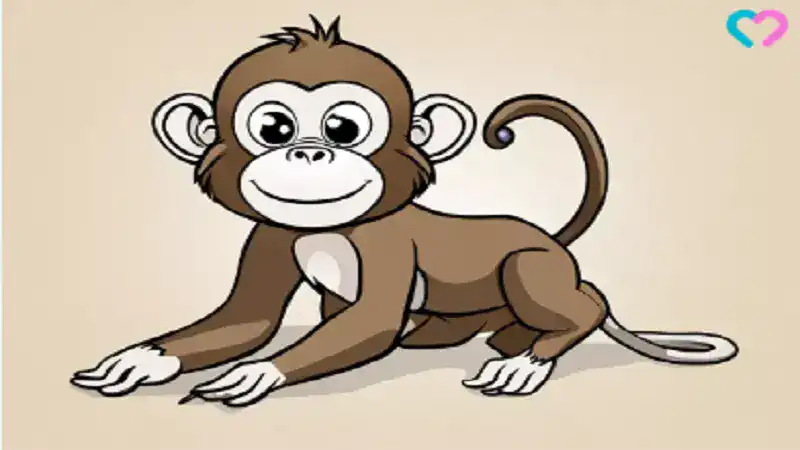Drawing:uqp7yroofp0= monkey art can be an enjoyable activity for everyone. Whether you’re a beginner or an experienced artist, drawing a monkey can be a delightful challenge. In this guide, we’ll explore various techniques and tips to make your monkey drawing stand out. Let’s dive into the world of drawing:uqp7yroofp0= monkey art and unleash your creativity!
Getting Started with Drawing:uqp7yroofp0= monkey
First, gather your supplies. You will need paper, pencils, an eraser, and coloring tools. Start with a light sketch to outline the monkey’s body. Drawing:uqp7yroofp0= monkey art requires focusing on basic shapes. Use circles and ovals to form the head and body. This step helps in maintaining proportion and structure.
To begin, lightly sketch a circle for the head and an oval for the body. Add smaller circles for the joints and limbs. This foundational sketch will guide you as you develop your drawing. Don’t worry about making it perfect; the goal is to establish the basic form.
Adding Details to Your Monkey Drawing
Once you have the basic shape, it’s time to add details. Drawing:uqp7yroofp0= monkey art involves creating expressive eyes, a cute nose, and a smiling mouth. Pay attention to the monkey’s fur. Use short, quick strokes to give the impression of fur texture. Drawing realistic fur can make your monkey come to life.
Start by refining the shape of the head and body. Draw the monkey’s face with large, expressive eyes that capture its playful nature. Add a small, rounded nose and a wide, cheerful mouth. Monkeys are known for their expressive faces, so take your time to get these features right.
Next, focus on the limbs. Monkeys have long arms and legs, which can be fun to draw. Use curved lines to create the arms and legs, and add fingers and toes. Pay attention to the joints to give your monkey a natural, dynamic pose.
Shading Techniques for Drawing Monkey
Shading is crucial in drawing:uqp7yroofp0= monkey art. It adds depth and dimension. Start by identifying the light source in your drawing. Shade the areas that are farthest from the light. Use a blending tool or your finger to smooth out the shading. Remember, practice makes perfect. Keep experimenting with different shading techniques.
When shading, start with the darkest areas first. These are usually the parts of the monkey’s body that are in shadow, such as the underside of the limbs and the areas around the joints. Gradually build up the shading, using lighter strokes as you move towards the areas that are illuminated by the light source.
To create a realistic fur texture, use short, quick strokes in the direction of the fur growth. Vary the pressure on your pencil to create different shades and textures. This technique will give your monkey drawing a more lifelike appearance.
Coloring Your Monkey Drawing
Now, it’s time to add color. Drawing:uqp7yroofp0= monkey art looks vibrant with the right colors. Choose shades of brown for the fur and pink or beige for the face and ears. Use light and dark shades to create highlights and shadows. Coloring adds a fun element to your monkey drawing.
Start with a base layer of color, using light, even strokes. Then, add layers of darker colors to create depth and dimension. For the fur, use a combination of browns, from light tan to dark chocolate. For the face and ears, use soft pinks or beiges to add warmth.
Don’t forget to add highlights. These are the areas where the light hits the monkey’s body directly. Use a white pencil or a very light color to add these finishing touches. Highlights can make your drawing look more three-dimensional and realistic.
Frequently Asked Questions About Drawing:uqp7yroofp0= monkey
Q: What is the best paper for drawing monkey art?
Use smooth, high-quality paper. It handles shading and coloring well. Heavyweight paper is also a good option as it can withstand multiple layers of shading and coloring.
Q: How can I make my monkey drawing more realistic?
Focus on details like fur texture and shading. Observing real monkeys can help. Study photographs or watch videos of monkeys to understand their anatomy and movements.
Q: What if I make a mistake in my drawing?
Don’t worry! Use an eraser to correct it. Mistakes are part of the learning process. You can also use a kneaded eraser to lift off smaller mistakes without damaging the paper.
Q: Can I use digital tools for drawing:uqp7yroofp0= monkey art?
Absolutely! Digital drawing can offer more tools and flexibility. Software like Adobe Photoshop or Procreate allows you to experiment with different brushes and effects.
Q: How long does it take to master drawing monkey art?
It varies. Consistent practice is key. Enjoy the process and improve over time. Everyone progresses at their own pace, so be patient with yourself and keep practicing.
Conclusion
Drawing:uqp7yroofp0= monkey art is a rewarding activity. It helps enhance your artistic skills and provides a fun way to express creativity. With practice and patience, your monkey drawings will become more detailed and realistic. So, grab your pencils and start drawing today!
Remember, the most important part of drawing is to have fun. Don’t be afraid to make mistakes and experiment with different techniques. Each drawing is an opportunity to learn and grow as an artist.
